When most people first get into photography they usually have a camera and a lens or two. Then a little way down the line they may add another lens, a flashgun and the odd accessory, perhaps. The next step is often an upgrade to the camera itself before investing in more (better) lenses. This continues until one day you realise you’ve got stacks of kit but you actually only use a fraction of it.
The logical solution is to sell what you are not using. It’s sitting there depreciating in value, taking up space and gathering dust when it could probably be helping someone else get into photography and capture great images. A result of that transaction, of course, is that you’ll have a nice cash injection that you can use to fund your next purchase. But how do you go about selling your second-hand kit?
Where to sell
There are several options for selling second-hand kit. A private sale is likely to bring you the most amount of money. If you’re lucky you may even know someone who’s in the market for the kit that you want to sell. This would be a nice and easy sale with minimal hassle. The only downside is that they might expect ‘mate’s rates’ and if anything ever goes wrong with the gear, they may let you know about it at every opportunity even if it wasn’t your fault.
The classified advertisements in your local paper are also a simple option, but they’re not targeted at your specific market so it may take a long time to sell your kit. On the plus side, you can probably hand deliver the camera so that you don’t incur any postage costs. However, the buyer may want to haggle a bit at the moment of sale, pointing out any flaws in the camera – even those you mentioned in the advertisement.
Online auction sites like eBay are another popular option. Bear in mind however, that there are fees to pay, which will eat into your takings. Most people also like to buy from sellers with a good history, so if you’ve not used the site before, you may want to reconsider.
Facebook’s Marketplace is proving an increasingly popular online option for selling because there are no fees and you can market your kit in the local area. That means you get all the money and you don’t need to send it through the post.
Many camera retailers will also buy your used gear from you. However, they won’t want kit that will be sitting on their shelves for ages, and if they sell it on through eBay they will incur costs. That means that there is likely to be a commission to pay. This could be in the region of 15% or 20% depending upon the ticket price.
In addition there are companies like mpb.com and Camera Jungle that specialise in selling second-hand camera gear. Just like a high-street retailer, they buy your kit to sell it, so you probably won’t make as much money as you would through a private sale, but it’s quick and efficient.
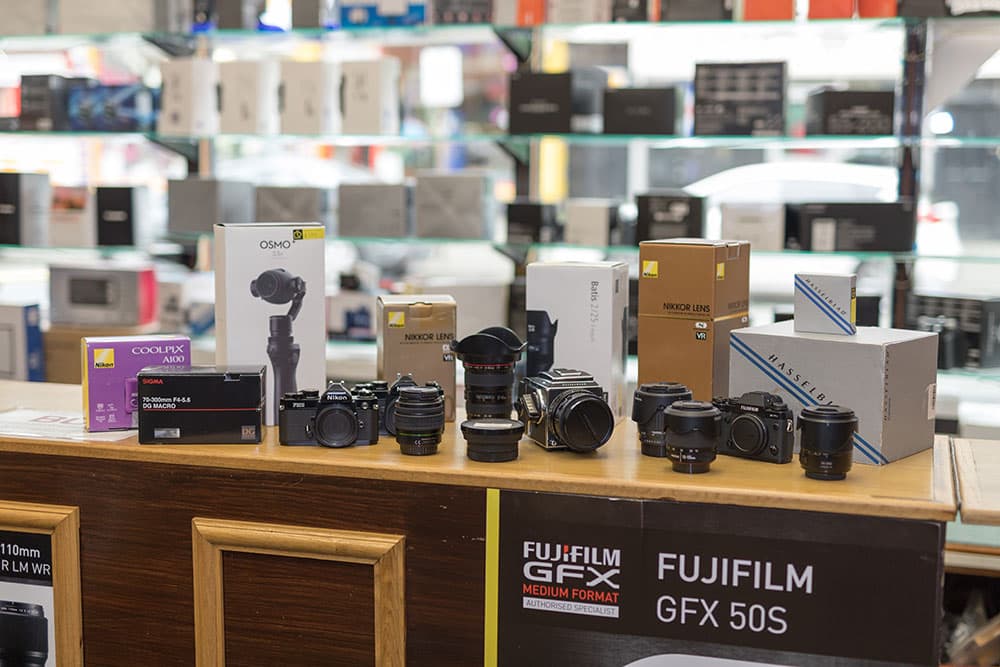
Buyers like to know that kit has come from a reputable source, so keep the box and receipt. Credit: Phil Milton
Trade in
Many camera retailers o er trade-in discounts on new kit. The idea of handing over your old kit for money o a new camera is appealing – it sweetens the deal. It’s also nice and quick with no postage to worry about.
However, Sarah Jones at Cambrian Photography in Colwyn Bay, North Wales, advises her clients to sell privately if they can, as this will get them the best price. Her caveat is that from time to time manufacturers o er trade-in bonuses. A trade-in bonus can make trading in a camera much more attractive. In some cases you might get an extra £100 on the trade-in value and when there are deals like that to be had, she says that trading in is the way to go.
Preparation
However you decide to sell your camera, you need to do a bit of preparation to get a good price. Most buyers like to see that the original packing is available.
This somehow suggests that the camera has been treasured and looked after. If you have the original receipt, that’s even better. This not only confirms the camera’s age and original price, but more importantly, it also lets the buyer know that it hasn’t fallen off the back of a lorry and it’s not a grey import. Most buyers like to know that the camera has come from a reputable dealer.
Check the camera or whatever you’re selling carefully. Look for any scuffs or marks and make sure you mention them in your advert. Check that everything is in working order. If it isn’t, get a quote for it to be fixed and mention this in the advert. Being honest about the condition at this stage can really pay dividends because it makes you more trustworthy. It’s far better to be open than to have to deal with a return and risk getting a bad rating that could then affect future sales.
Even if you’re selling via the classified ads of your local paper, it’s worth taking a few photographs of your kit so you can send them to anyone who enquires about it. If you’re selling online, photographs are essential. Make sure that your kit is spotlessly clean and include photographs of any accessories or packaging that’s included in the sale. As well as showing potential buyers what they are buying, the photographs can help you make a claim if something is damaged in the post.
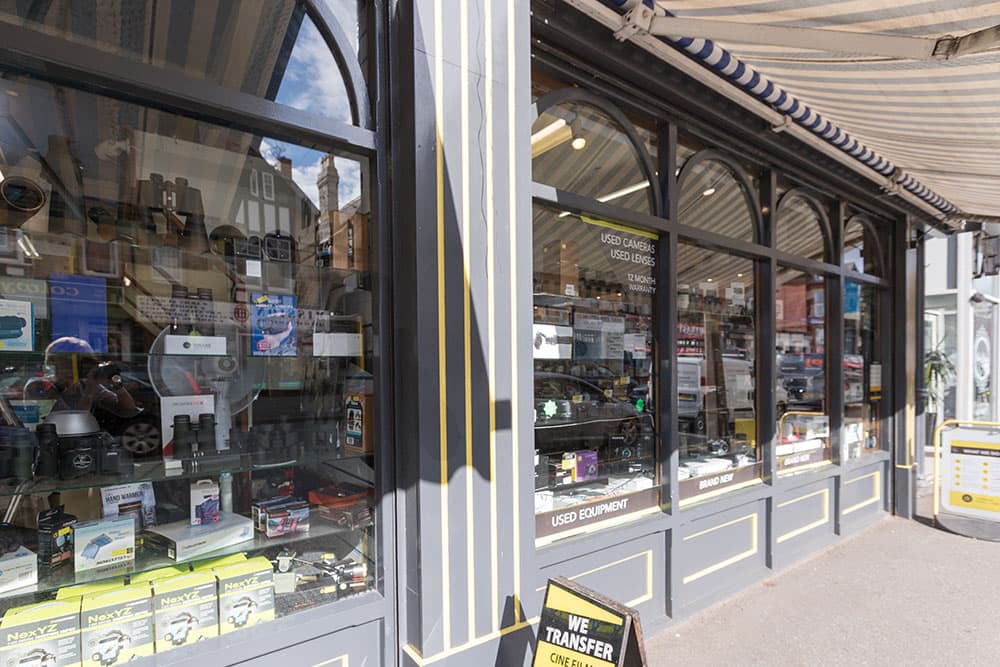
Check local camera stores for second-hand prices. Credit: Sarah Jones
It’s in the post
If you’re going to post the camera to a buyer you need to know how much the postage is going to cost so you can price accordingly. Find a box that will fit everything in and pile all the gear in along with the bubble wrap or whatever you need to keep it safe so you can check the weight. You’ll need this and the dimensions of the box to get a quote from the Post Office or a courier. When it comes to posting the gear, make sure it’s well protected and securely taped inside the box. Use a guaranteed delivery service so you can track it and have peace of mind that it’s been delivered safely.
The price is right
One of the aspects that people struggle with most when selling their camera gear is settling on the price. Unfortunately, the price that you paid when you bought the camera new isn’t relevant; it’s all about what the market is prepared to pay now.
One of the best ways to price your kit is to look at what similar items have sold for. The second-hand listings at the back of this magazine make a good starting point, but it’s also a nice excuse for browsing in your local camera store. Also take a look at eBay and search for the same or similar gear.
It’s important to take into account the condition of the gear you’re trying to sell. Someone may be willing to pay £1,300 for a pristine-condition Canon EOS 5D Mark III in its original box, for example, but they’ll only be looking to pay around £900 for one that is showing signs of wear and doesn’t have a box. As a guide, think about how much you’d like to get for your kit and what’s the lowest you’d be prepared to accept.
You may be able to make a quick sale if you charge a little less than the average rate, but make this clear in your description in case people suspect that there’s something wrong with the camera.
Getting the photos right
Photos are essential when you’re selling online and they’re useful with private sales, too. Here’s how to get the shots you need to make that sale
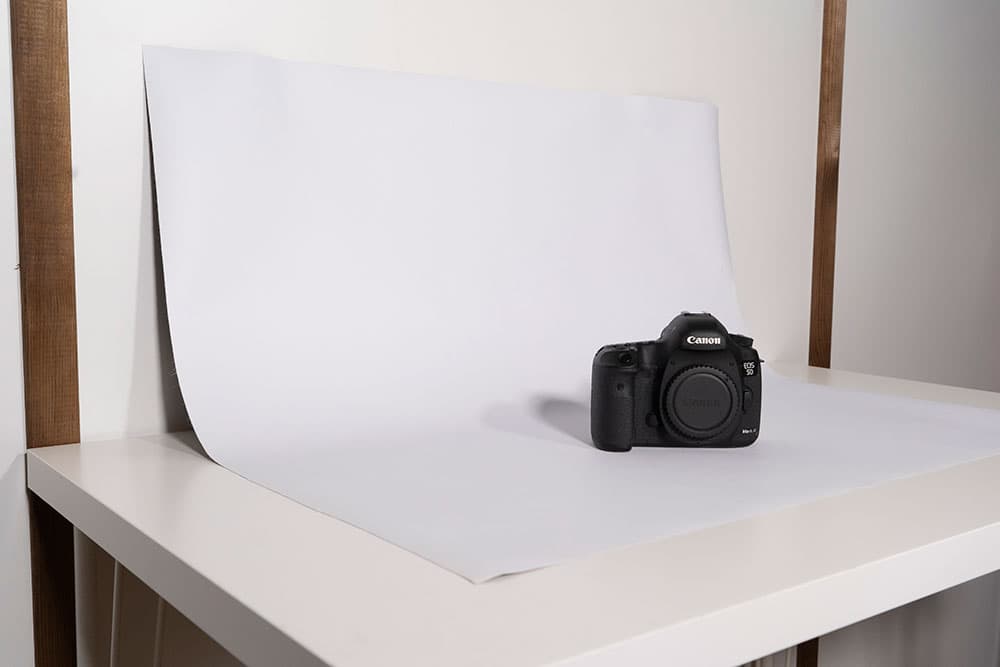
Credit: Angela Nicholson
Background
If you have a still-life table, now is the time to dust it off. If you don’t have one, you just need a regular table and a plain wall to create a clean background. To go the extra mile, use a sheet of white card to create an infinity curve.
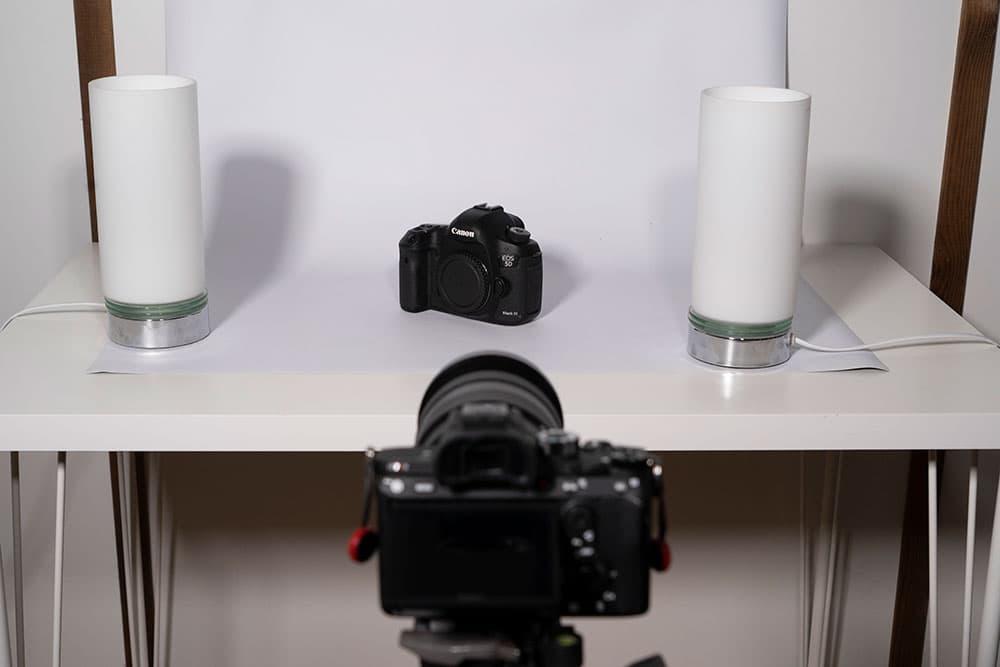
Credit: Angela Nicholson
Lighting
If you have studio lights, either ash or constant, these can illuminate your gear. The aim is to have diffuse soft light, so use a softbox or bounce the light. Alternatively, use natural light or household lamps, but the latter will need some diffusion – tissue can work well.
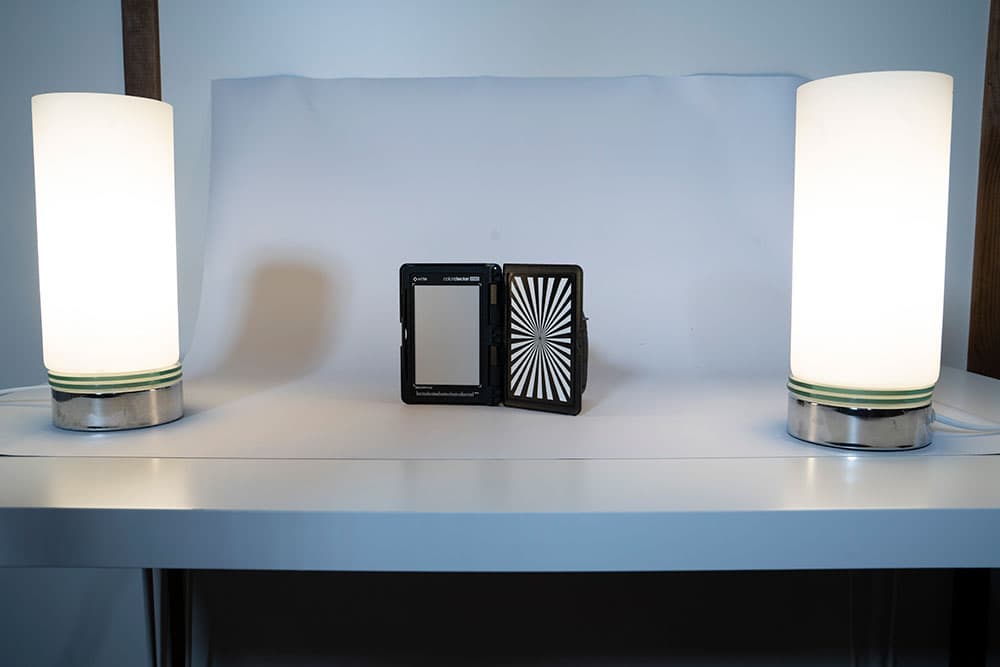
Credit: Angela Nicholson
White balance
Mixed lighting may confuse the camera’s auto white balance system so if necessary set a custom WB to get the correct-looking colours. The method varies by camera manufacturer but it basically involves photographing a grey card or neutral target to calibrate the system.
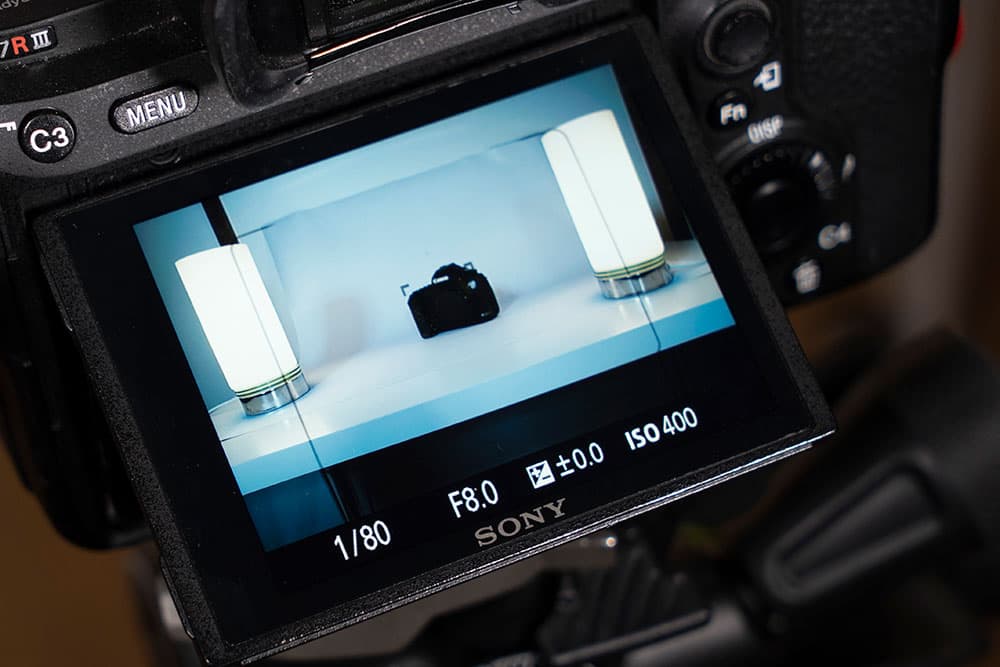
Credit: Angela Nicholson
Exposure
Don’t worry about blowing out the white background. The aim here is to make the camera look good and for all the details to be visible. As you’ll be shooting quite close to the camera you’ll need a reasonably small aperture to give you plenty of depth of field.
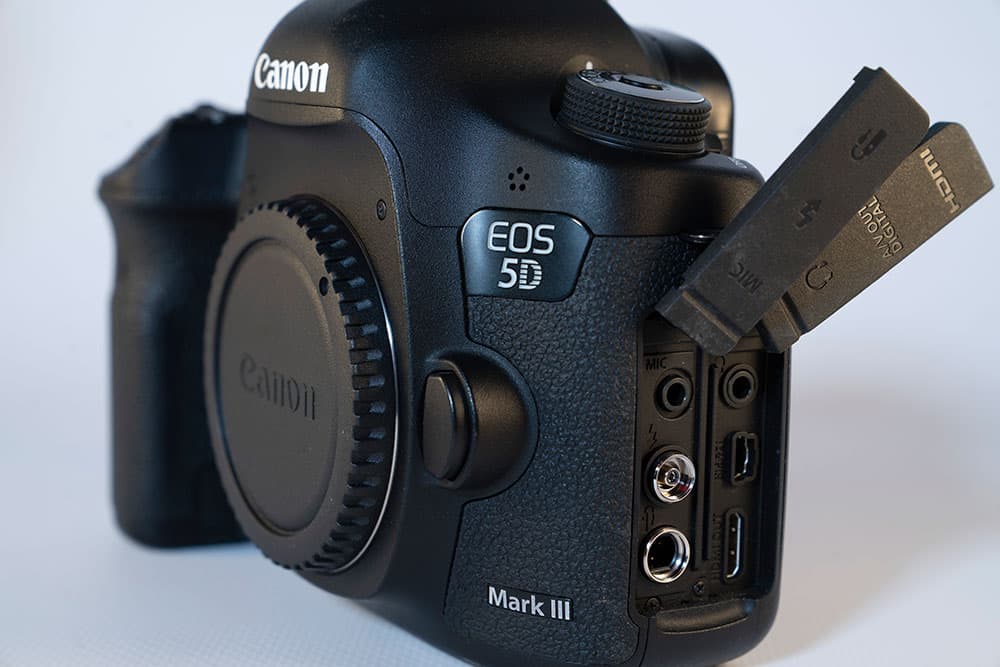
Credit: Angela Nicholson
Details
After you’ve got general shots of the camera from all angles, shoot any accessories that are included such as the battery and charger. Also go in a bit closer, ideally with a macro lens to shoot the key details. With lenses, people like to see that the front element isn’t scratched.
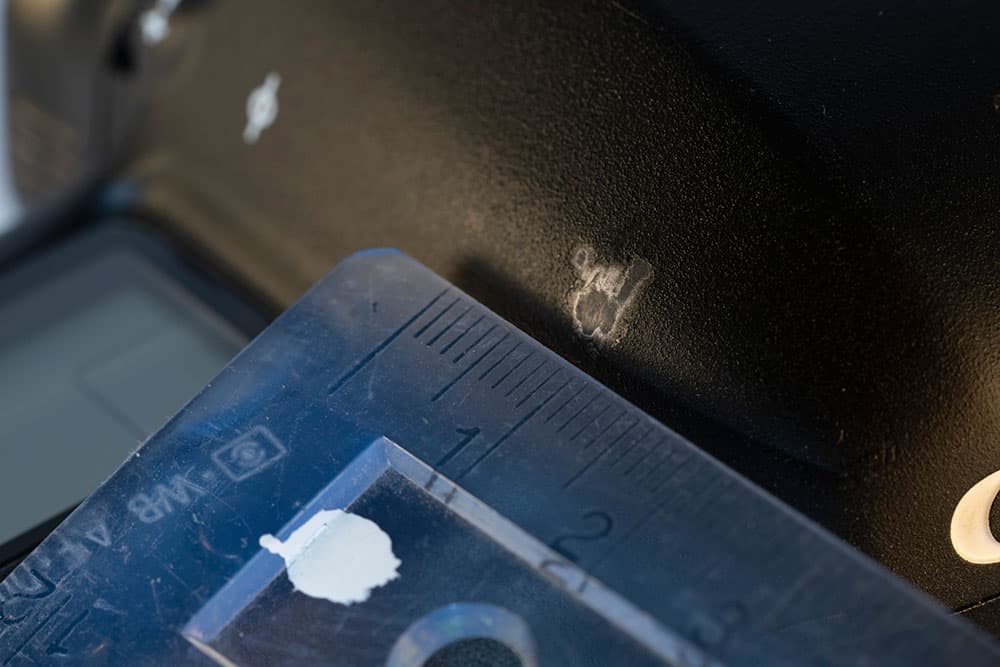
Credit: Angela Nicholson
Damage
If your camera is showing signs of wear and tear or has the odd scratch, make sure that you get a shot of it. It can be helpful to include a ruler or something instantly recognisable, such as a coin, in the frame so that buyers can judge the scale.







